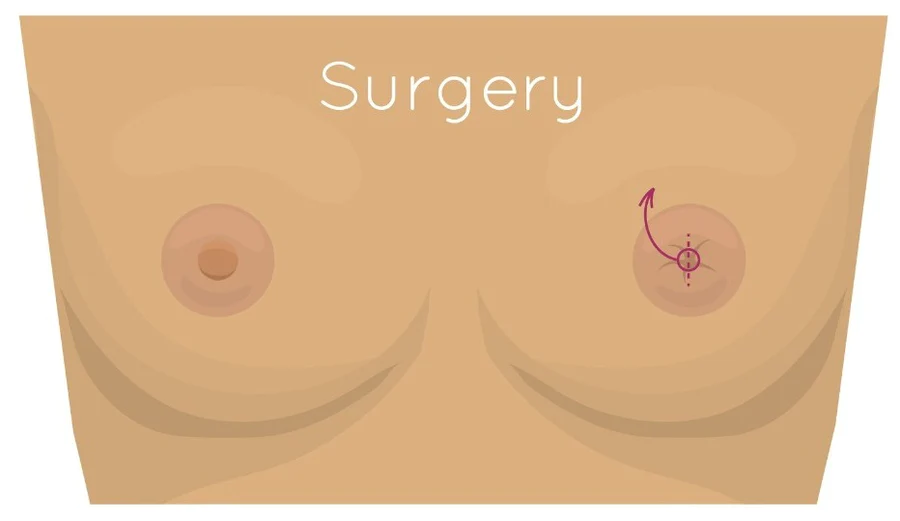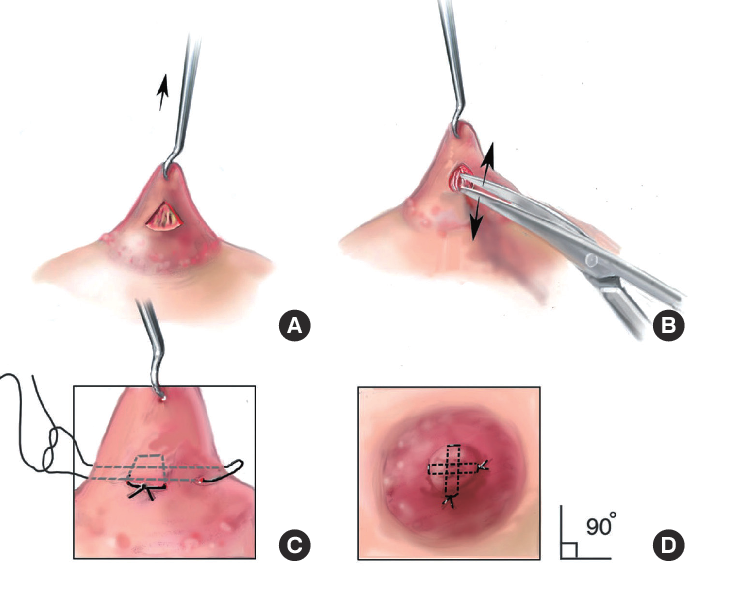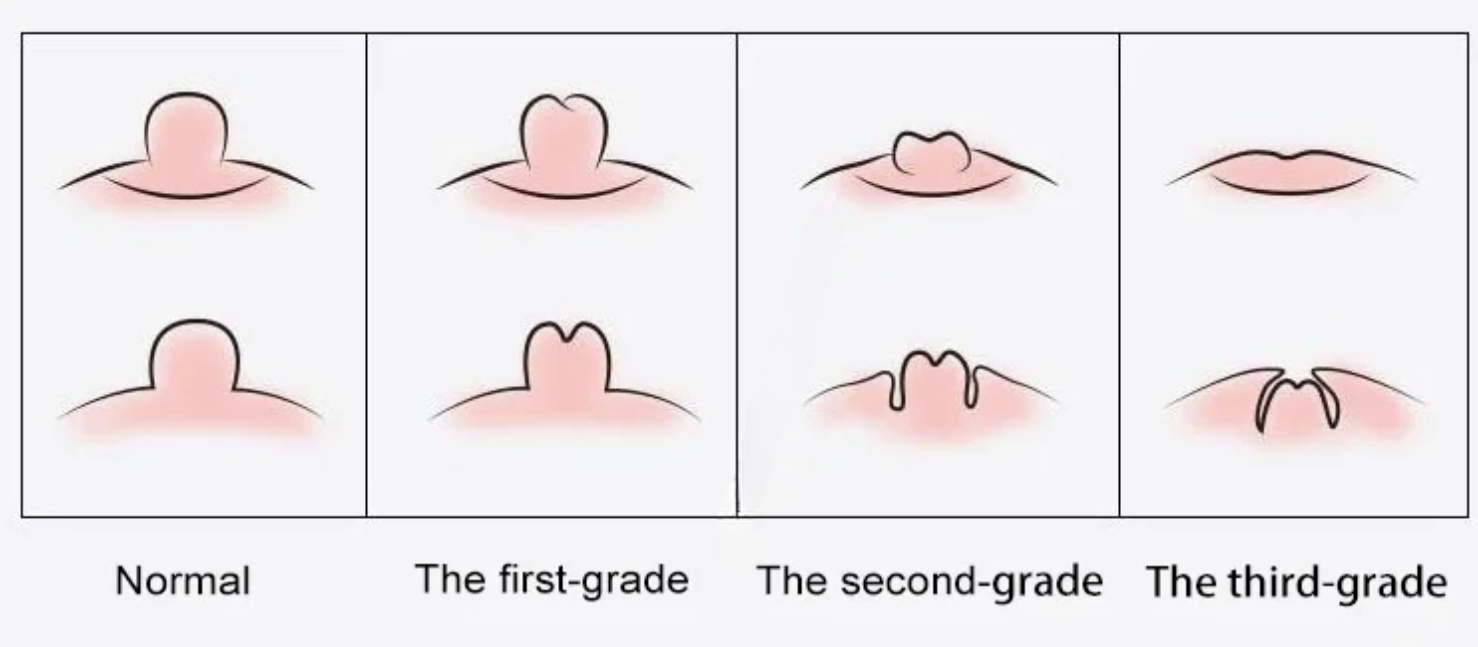Inverted Nipple Surgery: A Comprehensive Guide to Safe Correction
Inverted Nipple Surgery: A Comprehensive Guide to Safe Correction
Welcome to the comprehensive guide on inverted nipple surgery, a remarkable advancement in the field of cosmetic surgery. This procedure offers a solution to the challenges posed by inverted nipples, eliminating any discomfort or embarrassment associated with the condition. Thanks to the strides made in medical technology, the correction of inverted nipples has become a streamlined and uncomplicated procedure. So, what exactly does this procedure involve? This guide will provide an in-depth understanding of the inverted nipple surgery process, from consultation to recovery.
Key Takeaways
Inverted nipple surgery is a corrective procedure aimed at addressing inverted nipples, a condition affecting 2%-10% of women, which can lead to psychological distress and breastfeeding difficulties.
The surgery process includes pre-surgical consultation, the day of the procedure involving local anesthesia and tissue manipulation, and post-operative care with a primary goal of preserving the nipple’s appearance, sensation, and breastfeeding capability.
Inverted nipple surgery can also be safely combined with other breast procedures for a more comprehensive aesthetic outcome.
Understanding Inverted Nipples and the Need for Surgical Correction

Inverted nipple repair is a surgery designed to correct inverted nipples, a condition where nipples are retracted rather than protruding outward. This condition impacts 2%–10% of women and is frequently associated with taut tissues or shortened breast ducts that cause the nipples to retract. It is often a congenital condition, present from birth.
Inverted nipples can cause:
Psychological distress
Feelings of embarrassment
Dissatisfaction with physical appearance
Functional issues like breastfeeding difficulties and potential irritation or infection around the base of the nipple
Inverted nipples may not necessarily indicate cancer, particularly if they have been present since birth or if nipples remain inverted. However, if there is a sudden inversion of previously normal nipples, it is important to seek medical attention to rule out underlying conditions, including breast cancer.
Sensitivity of inverted nipples can be similar to that of erect nipples, with individual variations in sensitivity levels. The sensation after corrective surgery may either remain the same or potentially change, becoming more or less sensitive. This is because the surgery involves manipulation of the breast tissue and ducts that may affect nipple sensitivity.
Candidacy for Inverted Nipple Surgery
Those who have depressed or flat nipples are considered ideal candidates for inverted nipple surgery. This procedure is associated with minimal downtime and is aimed at enhancing the aesthetic appearance of the nipples.
The repair of inverted nipples is typically conducted as an outpatient procedure, allowing patients to return home on the same day as their treatment. This procedure can be particularly beneficial for women who experience difficulties with breast feeding due to their inverted nipples.
From Consultation to Recovery

The process from consultation to recovery in inverted nipple correction surgery follows a well-planned pathway. Starting with a pre-surgical consultation, patients meet with a skilled surgeon to address concerns and aesthetic objectives related to one or both breasts. The surgeon will assess the nipples and breasts, present surgical choices, and explain the procedure, while also documenting measurements and photographs as necessary. Patients should feel free to discuss any concerns and disclose their full medical history.
Nipple sensitivity can be impacted by inverted nipple surgery. The sensation after corrective surgery may either remain the same or potentially change, becoming more or less sensitive. This is because the surgery involves manipulation of the breast tissue and ducts that may affect nipple sensitivity.
Following the surgery, patients are typically escorted to a designated recovery area where skilled healthcare professionals oversee their post-operative care, prioritizing their comfort and well-being. Patients can generally expect to resume work the day following the inverted nipple correction surgery.
Pre-Surgical Consultation
The pre-surgical consultation involves a thorough examination of the nipples, review of medical history, and a discussion about the patient's goals and expectations. This information is vital for making decisions regarding the surgical plan and for anticipating potential impacts on healing and surgical results.
During the consultation, the surgeon performs a physical examination, discusses goals and expectations with the patient, and manages expectations by explaining potential risks and the recovery process.
Patients often inquire about the surgeon’s expertise, correction techniques, expected post-surgery nipple sensation, aesthetic outcome, and the follow-up process.
Day of the Procedure
On the day of the procedure, the anesthesia administered during inverted nipple surgery may vary from local anesthesia with sedation to general anesthesia, based on the specific case and the surgeon’s discretion. The surgical process encompasses stages such as:
Anesthesia application
Incision creation
Tissue release
Nipple fixation
Incision closure
Dressing application
Subsequent recovery phase
The surgical procedure to correct inverted nipples typically lasts from 1 to 3 hours, with the duration varying based on the complexity of the individual case. In order to uphold a sterile environment during the inverted nipple surgery, surgeons utilize a sterile operating room and adhere to stringent protocols to prevent contamination. Additionally, antibiotics may be used to minimize the risk of infection.
Post-Operative Care
To achieve optimal results after inverted nipple surgery, it is essential to adhere to the surgeon’s postoperative instructions, effectively manage any discomfort, and attend all scheduled follow-up appointments. Typically, during the recovery period, patients are advised to rest and refrain from engaging in strenuous activities for the initial week. Some swelling, bruising, and discomfort may be experienced, but these symptoms are expected to diminish within a couple of weeks. Optimal results are generally noticeable approximately a month after the procedure. Additionally, a specialized stent is usually placed over the nipple to provide support during the healing process, typically for a week.
Typically, individuals can anticipate returning to work within 2-3 days following the surgery. Regarding exercise, it is advisable to wait approximately 2-3 weeks before resuming your regular exercise regimen.
Techniques in Nipple Correction Surgery

Techniques that preserve lactiferous ducts, like those using distractor systems, have demonstrated a high success rate of 98.4% and a low recurrence rate of 1.5%, contributing significantly to the overall success of the surgery. Surgical approaches to improve nipple protrusion involve:
the dissection or resection of fibrous bands and lactiferous ducts
augmentation of volume beneath the nipple
filling the void resulting from resection
tightening the neck of the nipple.
Indeed, inverted nipple correction surgery can be safely combined with other breast procedures such as augmentation or a lift, resulting in a more comprehensive outcome.
Preserving Milk Ducts
The preservation of milk ducts during inverted nipple surgery is vital for maintaining the ability to breastfeed and preserving nipple sensation. Methods utilized to conserve milk ducts during inverted nipple surgery include:
Utilizing dermal flaps
Using sutures
Using distractor systems
Partial preservation of milk ducts
Employing traction with a dermal flap
These techniques help ensure that milk ducts are preserved during surgery.
The ‘parachute flap’ technique is a method utilized in inverted nipple surgery. It involves:
Crossing bulky subcutaneous triangular flaps
Potentially reducing the nipple base
Preserving some milk ducts for maintaining breastfeeding ability and nipple sensation
Maintaining the integrity of the lactiferous ducts by vertically cutting the proximal side of the gland at marked points
Utilizing a tunnel method to dissect the skin flap
This technique enables duct preservation while addressing the issue of inverted nipple.
Enhancing Nipple Protrusion

Factors such as the severity of the nipple inversion, the patient’s anatomy and nipple size, desired results, and the surgeon’s experience and preference influence the choice of technique for enhancing nipple protrusion in nipple correction surgery. The process of using internal sutures to enhance nipple protrusion entails the placement of a pair of perpendicular sutures using a 5-point star suture technique. This technique helps to maintain the protrusion of the nipple and address any inversion.
Dermal flaps aid in achieving nipple protrusion during correction surgery by filling the inner cavity of the nipple with resilient dermis, thereby creating a more prominent and protruding nipple. Distractor systems in nipple correction surgery serve the specific purpose of correcting inverted nipples by applying traction and gradually stretching the tissue to achieve nipple protrusion. They are a dependable and minimally invasive approach for correcting grade I and II inverted nipples while maintaining breastfeeding function.
Combining Inverted Nipple Surgery with Other Breast Procedures
Combining inverted nipple surgery with breast augmentation or lift offers multiple advantages. This approach can enhance breast volume, improve breast shape, and boost patients’ confidence. Furthermore, a board-certified plastic surgeon has the expertise to address inverted nipples during a breast augmentation procedure.
Breast augmentation or breast lift can be conducted in conjunction with inverted nipple correction surgery. A proficient plastic surgeon has the capability to perform both procedures simultaneously to address both the inverted nipples and any additional breast issues such as sagging or drooping.
The recovery process following the combination of inverted nipple surgery and breast augmentation is generally minimal, requiring patients to refrain from certain activities for a few weeks after the operation.
Risks and Complications Associated with Nipple Inversion Correction
Impact on Breastfeeding: Breastfeeding may be impacted by inverted nipple surgery, which depends on intact nipple sensation, a functioning neuroendocrine axis, and open nipple ducts. The likelihood of successful breastfeeding post-surgery varies, being more favorable in Grade 1 and 2 inversions but highly unlikely in Grade 3.
Changes in Nipple Sensation: There's a risk of changes in nipple sensation, including potential insensitivity, after the surgical procedure. This can affect personal comfort, the breastfeeding reflex, and overall nipple function.
-
Complication Rate: Complications following inverted nipple surgery have been observed in about 1.7% of cases. These can include:
Nipple sloughing
Areolar ulcer
Visible scars
Superficial infection
Partial necrosis
Depigmentation
Wound dehiscence
Wire dislocation
Nipple necrosis
Stitch abscess
Hematoma
Epidermal cyst
Recurrence: There is also a risk of recurrence of the nipple inversion. This means that despite the surgery, the nipple may revert back to an inverted state over time. The likelihood of recurrence can depend on various factors, including the initial severity of the inversion, the surgical technique used, and individual healing processes.
Summary
Inverted nipples, despite being common, can often lead to emotional discomfort and functional challenges. However, with advancements in surgical techniques and a better understanding of the condition, inverted nipple correction surgery has become a viable solution. Whether it’s about preserving milk ducts, enhancing nipple protrusion, or combining the surgery with other breast procedures, a proficient surgeon can offer a personalized approach to meet the patient’s needs. Despite potential risks and complications, the surgery has a high success rate, making it a promising option for those affected by this condition.
Frequently Asked Questions about Inverted Nipple Correction
Is inverted nipple surgery covered by insurance?
In most cases, inverted nipple surgery is not covered by insurance as it is considered a cosmetic procedure. However, it's advisable to check with your insurance provider as exceptions may apply, such as in the case of breast cancer.
Is inverted nipple surgery painful?
Inverted nipple surgery is not overly painful, and most patients only need over-the-counter pain medications for a few days afterward. It's possible to resume normal light activities and shower within 24-48 hours. Avoid heavy lifting or straining for 1 week.
What is the best treatment for inverted nipples?
For some individuals, especially those with more severe nipple inversion (Grade 2 or 3), surgical intervention might be recommended. Surgical correction, performed by qualified plastic surgeons, can provide a more permanent solution to this condition.
Who are the ideal candidates for inverted nipple surgery?
The ideal candidates for inverted nipple surgery are individuals with depressed or flat nipples, as the procedure is designed to enhance the aesthetic appearance of the nipples with minimal downtime.
How long is the recovery after inverted nipple surgery?
Recovery times can vary, but most patients can return to work within a few days. Full recovery, with the cessation of all swelling and healing of incisions, may take a few weeks. Strenuous activities should be avoided for at least 2-4 weeks.
Can inverted nipple surgery affect future breastfeeding?
The ability to breastfeed after inverted nipple surgery may be affected, especially if the milk ducts are cut during the procedure. Discussing breastfeeding goals with the surgeon prior to the surgery is important.
What are the risks of inverted nipple surgery?
Like any surgical procedure, there are risks involved, including infection, bleeding, scarring, changes in nipple sensation, and difficulty breastfeeding. There's also a small risk of recurrence of the inversion.




